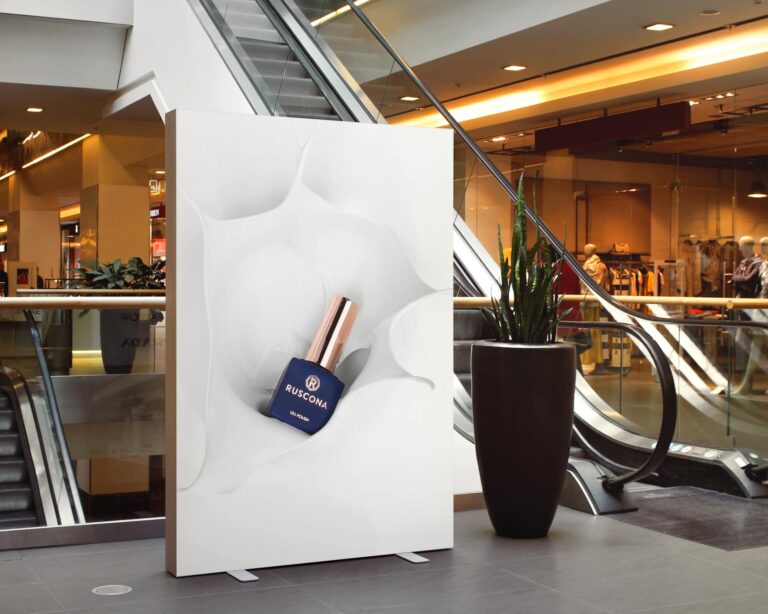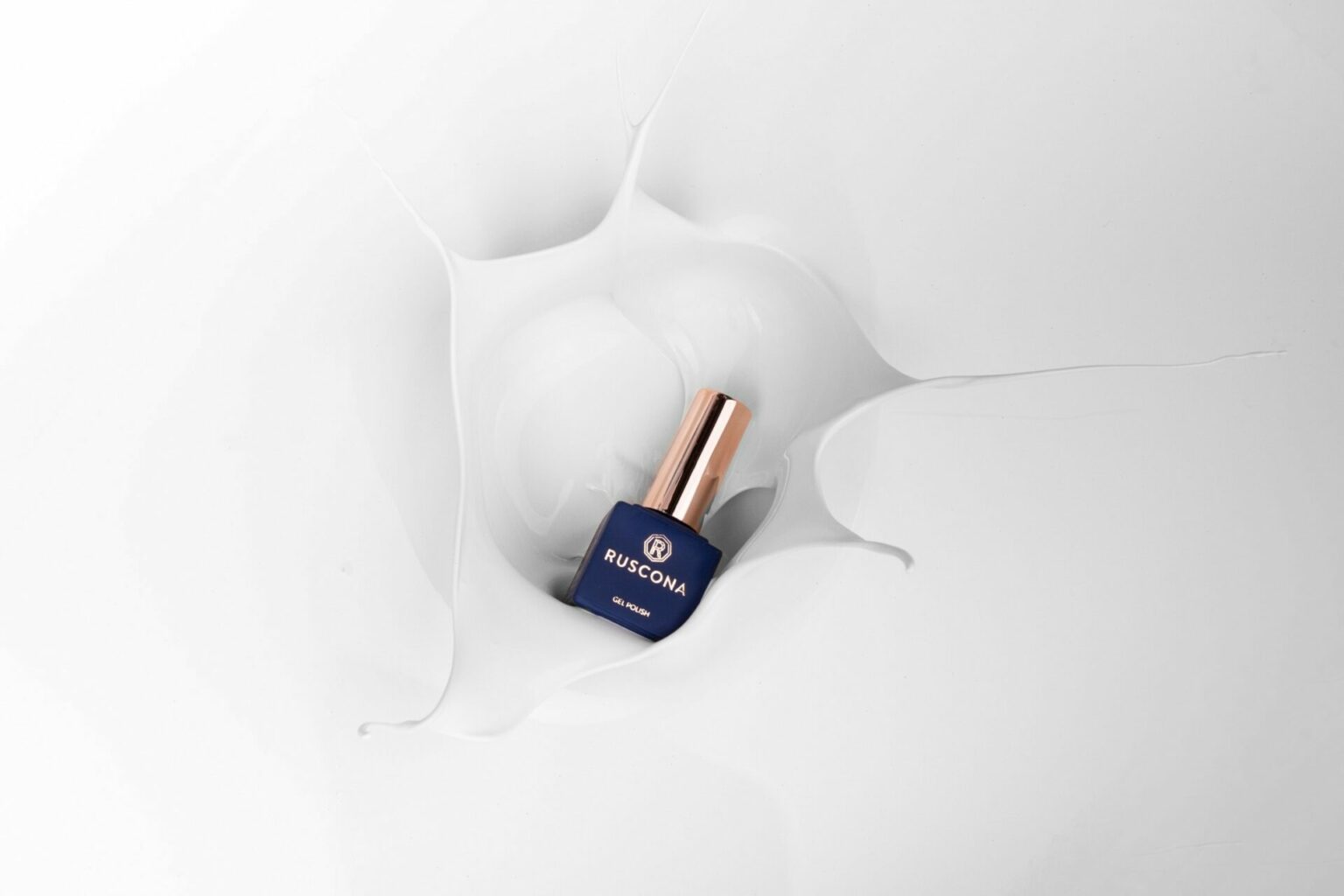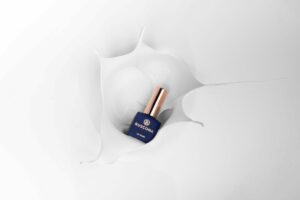Here is another still life photography or nail polish photography project in the “Splash? series where I have been working with cosmetic products for a brand’s hero images. With the creative freedom granted by the client, I originally experimented with water-based paint to develop interesting whirls and splashes as a way to showcase the brand. Due to the success and feedback from the client, I decided to continue with this medium. You can take a look here for another example of that.
For this still life photograph I wanted to create a ripple-like effect in the paint by dropping the nail polish bottle into it. I wished to capture the energy and fullness that erupts from the impact caused by the bottle, and the splashing up of the paint thereafter. This kind of technique is achievable in photoshop, where you can merge the two elements together. But what I was trying to capture was exactly the opposite. I wanted to create the raw look, that which you could tell was photographed. One that could perhaps turn into a real high-speed, messy photography project.
I see a lot of CGI artwork these days, where artists can create almost anything in 3D. These are rendered to look like real images where the difference is hard to notice. Having spent almost 15 years in thr 3D design industry, I know what is and what isn’t achievable, and I know that this kind of organic 3D modeling is really hard to achieve. I have been drawn more and more towards photography for that reason.

Nail polish photography proceedure
I invested considerabe time in photographing the natural behaviour and flair created when the nail plish bottle drops into the paint. The result was something very creative, yet real. Photoshop is not the same as photography – the rawness and imperfections are often removed or enhanced through software. I don’t mind these details showing up in the image, as it is not meant to be perfect. These little anomalies and imperfections add to the art in photography. I want my work to relfect my pure dedication and craftsmanship to the artform.
I am fascinated by the undisturbed, creamy texture of the paint that forms the background of the nail polish image. The nail polish bottle piercing into this dreamy, white liquid really creates a dramatic focal point. The interaction between the two objects are full of depth and expression. The waves, or splashes, caused from the bottle breaking the blanket of paint, pulse with life.
This image focuses on the shapes formed by the bottle hitting the paint. Although the branding and product is still central to the image, the real detail and emotion is the relationship between the paint and bottle. And how the splashes erupt up after the impact, forming buttery waves of white. I hope you enjoyed this project. Please leave your thoughts below and remember to subscribe to my mailing list for regular updates.

FAQs
What is CGI and how is it used in still life photography?
CGI is a digital art form that allows artists to create lifelike 3D images using computer software. In still life photography, CGI can be used to create realistic images of objects that are difficult or impossible to capture using traditional photographic techniques.
How was CGI used in creating this still life photograph of nail polish dropping into paint?
The still life with the nail polish dripping into the paint was created with CGI. The artist used computer software to model the nail polish bottle and paint, and then created a simulation of the liquid droplets and splashes.
What are the advantages of using CGI in still life photography?
Among the advantages of using CGI in still-life photography is the ability to create lifelike images of objects that are difficult or impossible to capture with traditional photographic techniques. CGI also allows greater creative control over the final image, including the ability to adjust lighting, texture, and composition.
How does using CGI in still life photography differ from traditional photography techniques?
The use of CGI in still life photography differs from traditional photographic techniques in that it creates a digital model of the object and simulates the behavior of fluids and other materials. This allows greater control over the final image, but also requires specialized software and technical expertise.
























